So here’s the thing with the Episcopal Church in Panama: it’s not one thing. That shouldn’t be surprising to anyone familiar with any other part of the Anglican Communion, but I often have to be reminded to not try fitting complex things into tidy packages. I guess the tidy package I had in mind for Panama was the “Hispanic Worship” box. That box might be defined by worship in Spanish with enthusiastic singing and a particular emphasis on the saints. And all of this can be found in the church in Panama, but these elements by no means define Episcopalians on the isthmus.
And it is fair to use the term Episcopalians, if for no other reason than that’s what Panamanians call themselves: The Episcopal Church in the Diocese of Panama. “Diocese of WHAT?” you ask? Good question. A diocese of the Iglesia Anglicana de la Region Central de America. It’s a province of the Anglican Communion thats been autonomous since 1997 and prior to various parts belonged to The Episcopal Church (from the U.S.) and the Church of England. Panama, in fact, still uses the Book of Common Prayer adopted by The Episcopal Church in 1979 (in both English and Spanish versions.) Prior to that, they used the 1928 prayer book.
But 80 year-old Connie, with whom I spent a week (more on that later,) remembered another prayer book. Turns out, the church that she grew up in inherited the Church of England prayer book from the Society for the Propagation of the Gospel missionaries who made it their business to establish churches and schools in the Americas. The tradition they espoused was more “high church” emphasizing the authority of priests and bishops, which may account for the fact that lay leadership has only recently been strongly supported in the diocese.
This history may also account for the fact that there is plenty of high church “smells and bells” in the course of worship in Panama. There are also lots of vibrant songs. Whether it is due to a Latino, Evangelical, or Low Church influence (from the southerners who brought their Episcopal Church experience from the United States,) worship in Panama also includes vibrant singing and energetic preaching. It’s not unusual to have drums, incense, a thirty minute sermon, and a sung Eucharistic prayer all in the same service.
For those reading along who are not regulars in an Episcopal Church in the U.S., this is like putting the peanut butter in with the chocolate. Or the chocolate in with the peanut butter, for that matter. Either way, it works just fine in part, I think, because Panamanians don’t seem to get hung up on the historically arbitrary theological associations of particular ways of worshiping God. If it is edifying of the Gospel, they seem willing to at least give it a shot.
Which is also true of the way they welcomed us visitors. The fact that we Panama Project participants were often the only white people in the room was obvious but not an obstacle. There is a history of racial segregation and discrimination in Panama, much of it perpetrated by white Americans, but for a variety of reasons this history has not created a persistent level of suspicion between people of different skin colors.
To be honest, I don’t know how boldly the lines are drawn between the Afropanamanian and Latino communities. I also don’t want to discount the very legitimate reasons African Americans have for being suspicious of white folks. (Or deny that white folks often approach African Americans with suspicious that are often less than justified.) What I did experience in gathering after gathering was a genuine hospitality that helped me imagine what it could be like for us to be together, enjoying each others’ differences and similarities in a relaxed and natural sort of way.
At one gathering, the entertainment included a fantastic pop and jazz singer. As much as I love jazz in general, the Bosa Nova tune “Mas que Nada” is one of my favorites. I did not think the performer would notice my little seated dance, but apparently she did. Beyond my wildest expectations, she got me up to dance a bit of salsa with her while she sang. In the States, I might have been mortified and would definitely have suspected that I was being made to act like a dork. In this context, I felt supported, that my being willing to have a good time, to dance, was a way of enjoying this event with everyone there. There is, in fact, video of this activity, but you will have to ask me to see it in person. That mess is definitely not going on the internet!
Here’s Sergio Mendes:
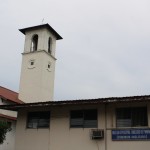




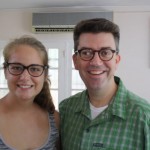
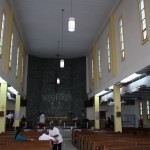
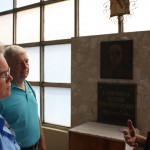



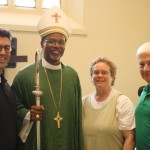
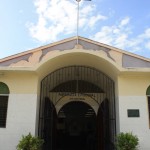
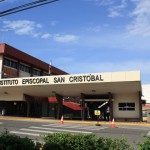
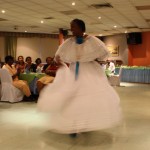
Hello. Thanks for your information. Is there a specific church for British Anglicans? Or are they scattered about or non-practicing?
To be honest, I don’t know. It has been several years; however, I do think the Cathedral of St. John in Panama City and Christ Church by the Sea in Colon might be the more Anglophile churches in Panama.